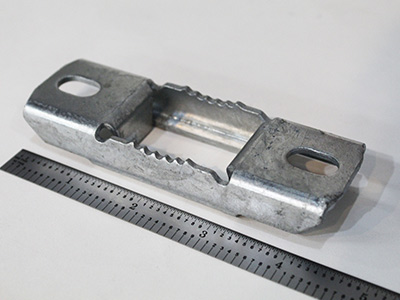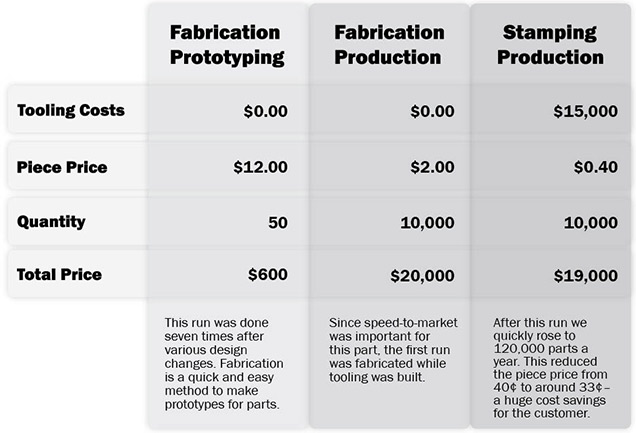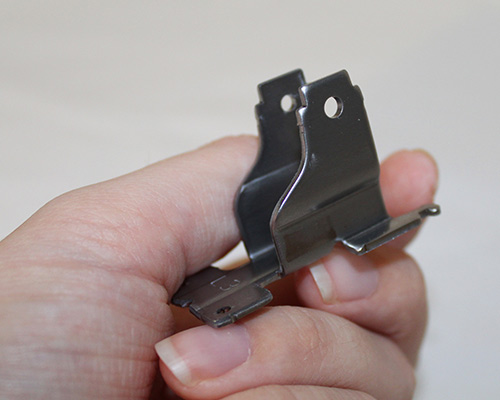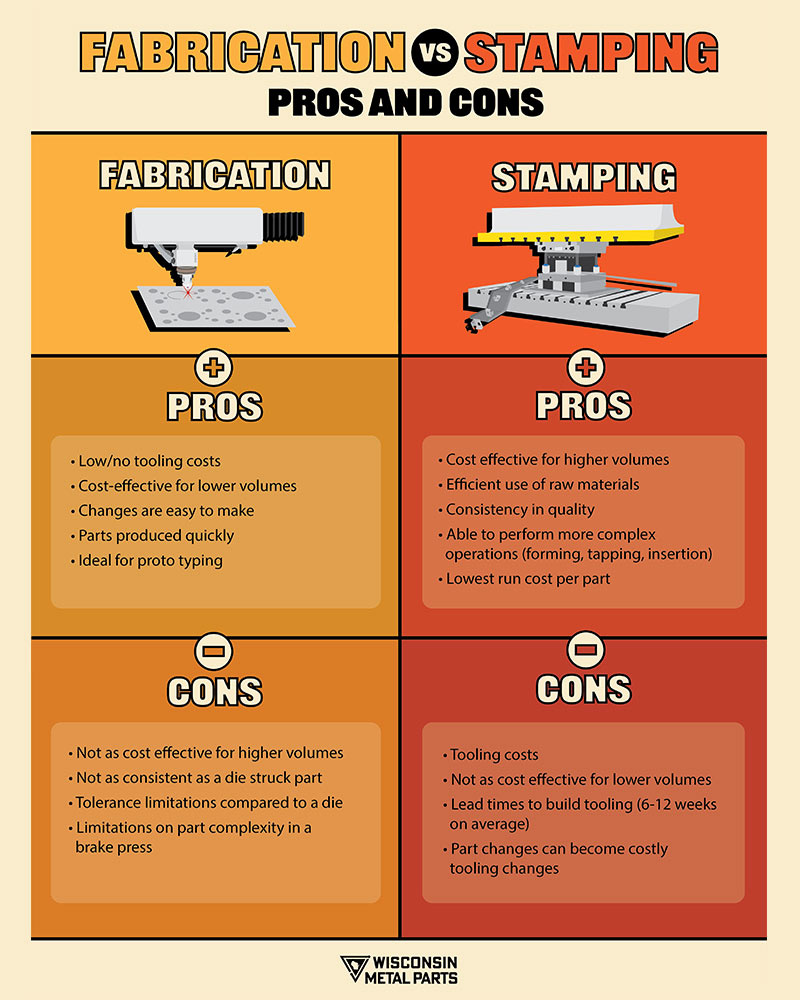
Fabrication vs Stamping
August 11th 2021
Manufacturing Crossroads: When to Stamp and when to Fab?
Many metal parts have a number of ways they can be manufactured. The question is, which one will work best for your unique situation? In this guide, we will go over a case study that highlights the differences between stamping and fabricating a part, what the production threshold usually is, review some cost comparisons, pros and cons, and ultimately help you decide: should I fabricate this part or have it stamped?
A great example of this dilemma is this clamp part. The company reached out to us for assistance with prototyping, as speed to market was their main focus. We ultimately laser cut and brake formed 7 versions of their part at 50 pieces each for testing. Due to the low volumes of the part fabrication was the best choice and cost $12 per part. As their design changed it was easy to make edits to the laser/brake programs and change the part to their updated design. This allowed for quick, inexpensive changes and having parts within a few days.

After the design was finalized, an annual volume of 100,000 units per year was set, so we decided to go with progressive stamping as the method of production. However, due to their need to get these parts out to market quickly, they decided to also have us fabricate the first 10,000 units. Those production fabricated parts cost around $2 each to produce, totaling around $20,000. The tooling build took 7 weeks and then 10,000 production stampings were able to be produced at $.40 each and eventually as the volumes reached 100,000 pieces, we were able to get to $.33 each.
Let’s look deeper at the actual costing for this part.

Obviously, stamping was the best production method for this part, given the volumes. Fabrication made sense at the beginning to get the initial parts to market, but once the tooling was built, stamping was the more cost-effective option. 10,000 parts is usually the threshold that many companies use when determining their manufacturing method, because as volumes increase, so do costs. One possible way to keep costs down at higher quantities is to invest in tooling and stamp your parts.
There are other advantages to stamping as well. Take this part for example.
This is part of a slider for the sunroof of a car.The manufacturer knew they would need upwards of 180,000 pieces off the bat, so stamping was immediately selected as the manufacturing method. Besides the volume challenge, there are components of this part that would be difficult to fabricate. There are tight tolerances along with bends and forms that would be too small and too detailed to replicate using a laser or brake press. If they had wanted to do prototyping, we could have managed it with soft tooling, but there was no need since the design was already finalized.
The tool for this part ended up being a $75K, 21-station progressive die, but it kept the piece price of this part to about 30¢ each.
When it comes to selecting your manufacturing process between fabrication and stamping, there are lots of pros and cons to consider, as seen in the chart below.

Overall, there are a lot of elements that go into choosing a manufacturing method for your metal parts.Volumes, quality and budget can all play a role in your decision. Market leading companies form strategic partnerships with suppliers that have multiple options available to help them reach their goals.
If you would like our help with your next project, please visit our website or call us at 262-524-9100. We are here to help you remain competitive and spend your money wisely.
At Wisconsin Metal Parts we welcome challenges!








